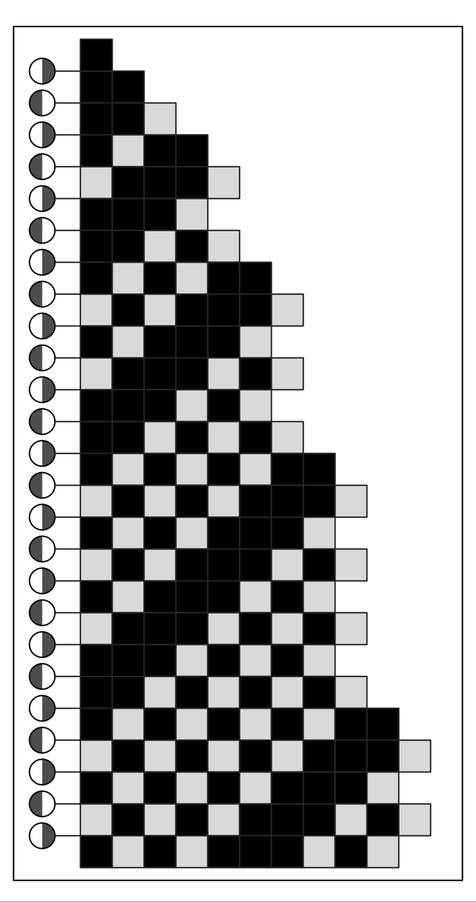Cyclic Tag Systems
The basic operation of the tag systems that we discussed in the previous section is extremely simple. But it turns out that by using a slightly different setup one can construct systems whose operation is in some ways even simpler. In an ordinary tag system, one does not know in advance which of several possible blocks will be added at each step. But the idea of a cyclic tag system is to make the underlying rule already specify exactly what block can be added at each step.
In the simplest case there are two possible blocks, and the rule simply alternates on successive steps between these blocks, adding a block at a particular step when the first element in the sequence at that step is black. The picture below shows an example of how this works.
The next page shows examples of several cyclic tag systems. In cases (a) and (b) simple behavior is obtained. In case (c) the behavior is slightly more complicated, but if the pattern is viewed in the appropriate way then it turns out to have the same nested form as the third neighbor-independent substitution system shown on page 83.
So what about cases (d) and (e)? In both of these, the sequences obtained at successive steps grow on average progressively longer. But if one looks at the fluctuations in this growth, as in the plots on the next page, then one finds that these fluctuations are in many respects random.
 |   |
An example of a cyclic tag system. There are two cases in the rule, and these cases are used on alternate steps, as indicated by the circle icons on the left. In each case a single element is removed from the beginning of the sequence, and then a new block is added at the end whenever the element removed is black. The rule can be summarized just by giving the blocks to be used in each case, as shown in the rule summary.



